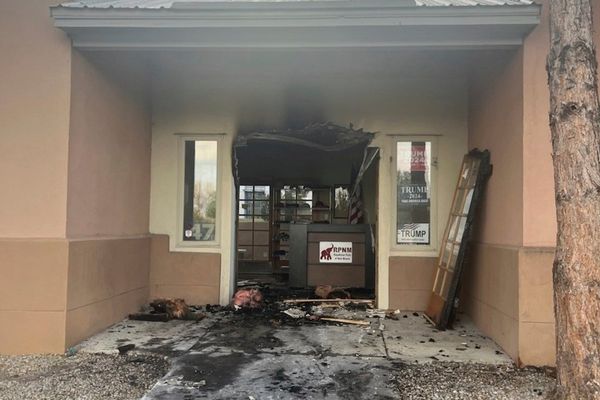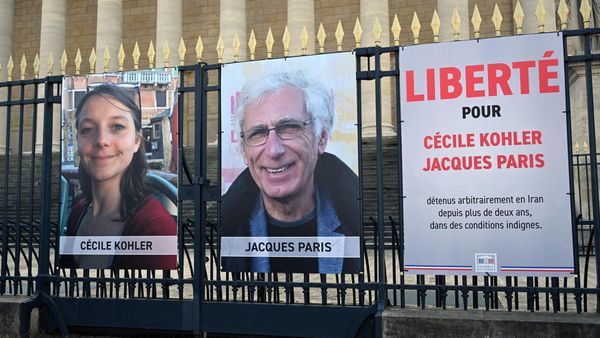
Tuesday 8 November marks the first general election day since Donald Trump tried to overturn the results of the 2020 presidential race.
Millions Americans will have already cast their ballots, either by mail or in person, and millions more will show up to do so in person. These votes are being cast at a moment in which the US election system has come under attack like never before.
We may not know the winner of key races until later in the week. That’s normal. Still, there are elevated fears that several candidates who have seeded doubt about the 2020 election will use this period of uncertainty to question the integrity of the 2022 results.
Here’s a guide on what to look out for on election day and the days and weeks after.
We probably won’t know the winners on election night
In many races, we’re not going to know who won on election night. After the polls close, candidate vote totals are likely to shift as local officials continue to count ballots.
“It’s very likely we will know virtually nothing on election night, and that is normal,” said David Becker, the founder and executive director of the Center for Election Innovation and Research. It’s only with wide margins or data like exit polling that people find out results the same day.
Once the polls close, election workers tabulate the votes in each precinct and transmit them to the county’s central election office. Each county reports their results to the state. In many cases, both the county and state provide regular updates throughout the evening online as results are reported. Counties are also continuing to process mail-in ballots.
Vote totals are likely to shift throughout the evening as well as in the days that follow election day as votes continue to be counted. That shift isn’t unusual and can be explained by two dynamics, said Charles Stewart III, a political science professor at MIT who specializes in election administration.
First, he said, the places that report their votes first tend to be smaller, Republican jurisdictions. Second, many places report their in-person election day vote first and their mail-in absentee vote later. Those votes tend to skew towards Democrats.
“Larger jurisdictions also tend to be more Democratic. Therefore tend to have more absentee and mail ballots. You’re getting both of these dynamics pushing in the same way, which then leads to what appears to be this big rush of Democratic ballots counted at the end,” he said.
Because these totals can change, there should be deep skepticism of attempts to claim victory before votes are counted.
Projections about which candidates will win are separate from official results
As officials report election results, news organizations, including the Associated Press and major television networks, scrutinize data to try to make projections about which candidate will win. This process is independent of the official election efforts to count votes.
News organizations use a team of independent experts who use surveys, past voting data and the incoming election results to tell the public who is going to win a race.
In some races, experts are able to quickly make a projection about who is going to win a race. If a candidate from one party has consistently won a race, for example, and the voting patterns on election night appear to immediately be in line with previous elections, news organizations may feel confident in making a projection with only a fraction of the vote counted.
But in competitive races where there’s a slim margin between the candidates, and a lot of the vote hasn’t been reported yet, experts are much more cautious and will not make a prediction. As the vote count continues, forecasters compare the margin separating the candidate with where in the state there are still votes outstanding.
Once they feel confident that there’s no path to victory for one candidate, they will declare a winner.
Canvassing and certification deadlines help make sure the votes add up
After election day, there are two key deadlines – different in each state – in the vote-counting process. The first is the date by which each county in the state has to complete a canvass of election results and sign off on them.
This process, overseen by members of both parties, is designed to catch any irregularities in the count and ensure everything adds up. Once all votes are accounted for, the county signs off on the results and sends them to the state, which again reviews the results. Procedures vary in different states, but this is also the period in which candidates may qualify for or request a recount.
In 2020, Trump and his allies targeted the canvass process as part of an effort to extend vote counting. There’s concern that this could happen again this year, but experts say that the law makes clear that officials can’t simply refuse to certify an election absent strong justification that can hold up in court.
“Obviously that’s really concerning if there are officials who are willing to violate their oath of office and the laws of their state and refuse to certify results that are maybe counter to their own personal political philosophy but where there’s no evidence to suggest there was anything amiss. That’s a real problem,” Becker said. “On the other hand we’ve faced this problem before, and so far it’s been handled pretty well.
“But if enough of this happens, and it creates a period of uncertainty in the process, which I think is the goal of the election deniers, it does create an environment that is very ripe for violence,” he added.
There will probably be long lines at the polls in some places
Polls in each state generally open and close at the same time. It’s not uncommon to see lines at the polls first thing in the morning. Voters will often line up before the polls open in the early hour of the morning to be among the first people to cast their vote on election day. It’s also not uncommon for there to be glitches at the polling place first thing – equipment might not get delivered on time, a machine may break, the software to check in voters may not immediately work.
“These things happen and are normal. They’re not signs of widespread dysfunction,” said Becker said. “We have almost a million polling places in the United States for an election like this. Wouldn’t it be amazing if there weren’t any problems in any of them?”
Election officials are usually able to get these problems resolved quickly, but sometimes they can last longer into the day. If the start of voting is delayed, candidates and political parties will often petition courts to extend voting hours.
States have different voting requirements
Every state has its own set of procedures for voting on election day, including where people can vote, whether they can register to vote at the polls, and what kind of identification they have to produce.
Those rules can differ from what was allowed during early voting. In Georgia, for example, a voter can vote at any of the polling locations in their county during early voting, but must cast their ballot at an assigned precinct on election day. In North Carolina, voters can register at the polls during early voting, but not on election day.
Those who plan to vote on election day should check with state and local officials about where you’re allowed to vote and what you need to bring to do so.
Some will claim that they see election errors (and most will turn out to be false)
Every election day, there are voters who claim to see something amiss at the polls or during the vote counting process. In 2020, many of those claims were loudly amplified by Donald Trump and continue to live on today, even though they’ve been debunked over and over again.
In 2022, we’re likely to hear similar claims. Each one of those should be taken with a “giant grain of salt”, Becker said. “I would look at any claim from anyone saying that, regardless of party of election, highly skeptically.
“These things are largely driven by losing candidates or candidates that expect to lose,” he added. The claims, he said, are “almost always proven to be false. Or easily explainable.”
In 2020, for example, there were claims from observers about ballots being wheeled into a central counting facility in Detroit late during election night. Those ballots had already been verified by the local election office and there was nothing wrong with their late arrival time. The claim was nonetheless touted by those who sought to sow doubt about the election results.
“It’s kind of the fog of war point. There’s always things that go on during the confusion of the count that you don’t quite understand. But, there are trained people running the elections who are prepared for these sorts of things,” Stewart said.
This year more citizens could try to challenge other voters
In many places, voters are allowed to challenge the eligibility of someone who shows up at the polls if they have a reason to believe the person is not qualified to vote in that jurisdiction.
There is increased concern about these kinds of voter challenges this year given the orchestrated efforts to recruit people who have doubts about the 2020 election to work the polls. If a voter is challenged, there are specific procedures election workers must follow to deal with a challenged voter.
In some ways, however, talk of widespread voter challenges is not new.
“There’s always talk that there’s going to be an army of challengers and observers ready to go. And in past elections that’s never materialized,” he said. “There are people who think that if fewer people vote, that’s a good thing. And they want some people to self-suppress. They want people to think that voting is going to be dangerous. Or difficult. And that they’re going to have to walk a gauntlet to walk into the polling place. A gauntlet of hostile forces.”
Still, he said, widespread challenges should be monitored closely.
“We’re going to have to remain vigilant about that,” Becker said. “Clearly the election denial forces have been very active and continue to be very strong in spreading lies and disinformation. And there may be people who have bought into that information who are inclined to disrupt polling places.
“In my conversations with election officials, I think a lot of them have planned for this, have prepared for this, and included this in training. I think that’s good. I don’t know if it’s gonna be widespread or not.”







